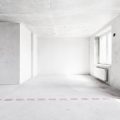Introduction to Interior Design Fees in the UK
When embarking on an interior design project in the UK, understanding how designers charge for their services is crucial. Fee structures can greatly impact your overall budget and influence the decisions you make throughout the process. British interior designers typically use one of three main pricing models: flat fees, hourly rates, or a percentage of the total project cost. Each method offers different levels of transparency and flexibility, and knowing which is best suited to your needs can help ensure a smoother and more cost-effective renovation experience. In this article, we will explore these fee structures in detail to provide clarity for homeowners, landlords, and property developers planning their next project.
2. Flat Fees: Predictability and Scope
Flat fee arrangements have become increasingly popular in British interior design, especially among homeowners and commercial clients seeking clarity and budget control. A flat fee is a predetermined sum agreed upon at the outset of a project, covering specific tasks or the entire design process regardless of the hours spent. This approach provides predictability for both designer and client, reducing the risk of unexpected costs and promoting transparent communication about deliverables.
How Flat Fees Are Calculated
The calculation of flat fees in the UK typically involves assessing the scope of work, the size and complexity of the space, and any special requirements such as listed building consent or bespoke joinery. Designers may also factor in their experience level, geographical location, and market demand. Below is a typical breakdown:
| Project Type | Typical Flat Fee Range (GBP) | Scope Included |
|---|---|---|
| Single Room Redesign | £1,500 – £5,000 | Concept, layout, sourcing finishes & furnishings |
| Full Home Renovation | £8,000 – £25,000+ | Design development, contractor liaison, site visits |
| Commercial Fit-Out | £10,000 – £50,000+ | Planning approvals, furniture specification, project management |
Typical Scenarios Where Flat Fees Are Favoured in the UK
- Residential Projects: Homeowners often prefer flat fees for kitchen or bathroom makeovers to avoid escalating bills.
- Developers: Property developers use flat fees to keep tight control on budgets for show homes or rental refurbishments.
- First-Time Clients: Those new to hiring designers appreciate knowing costs upfront, which can ease concerns over value for money.
- Bespoke Packages: Some British designers offer “room packages” with fixed prices for specific spaces or services—ideal for smaller projects or consultations.
The Benefits and Limitations
The main advantage of a flat fee is cost certainty; both parties know what is included from the start. However, this structure requires a well-defined brief and clear agreement on what counts as “out-of-scope” to avoid misunderstandings. In summary, flat fees are particularly suited to projects where predictability is key and the scope can be clearly mapped out from day one.

3. Hourly Rates: Flexibility and Transparency
When it comes to British interior design, hourly rates are often praised for their flexibility and transparency, making them a popular choice among both designers and clients—especially for smaller projects or where the scope is not yet fully defined. With this model, interior designers charge clients based on the actual hours spent working on a project. This approach allows homeowners or businesses to manage budgets more closely, as they pay only for the time invested rather than a blanket fee.
One of the main benefits of hourly rate models is that they suit projects with uncertain timelines or evolving requirements. For example, if a client needs help with just a few rooms or seeks professional advice for sourcing specific furnishings, hourly billing can be more cost-effective compared to flat fees or percentage-based costs. It provides an opportunity for clients to engage designers on an as-needed basis, which is particularly valuable for those who want expert input without committing to a comprehensive design package.
In practice, many British clients utilise hourly rates during initial consultations or when tackling minor refurbishments and styling updates. This method is also preferred when clients wish to retain greater control over the decision-making process and keep a clear record of how much time is being dedicated to each task. The transparency offered by this pricing structure fosters trust between designer and client, as detailed timesheets and regular updates are commonly provided. However, it’s important for both parties to establish clear expectations from the outset regarding what services are included in the hourly rate, and how additional expenses will be handled to avoid any surprises down the line.
4. Percentage Costs: Linking Fees to Project Value
Percentage-based fees are a popular choice among British interior designers, particularly for large-scale projects or those with variable budgets. This approach directly ties the designer’s fee to the overall value of the project, typically calculated as a percentage of the total spend on works, furnishings, and sometimes professional fees. It offers a flexible structure that aligns the designer’s interests with those of the client—both parties benefit from achieving high-quality results within an agreed budget.
How Percentage-Based Fees Work
Under this model, the designer charges a set percentage of the total project cost. For example, if a renovation costs £100,000 and the designer’s fee is 12%, their charge would be £12,000. This method ensures transparency and can incentivise efficient project management, as the fee grows in line with project scale and complexity.
Typical Percentages Charged in the UK
| Project Type | Typical Percentage Fee |
|---|---|
| Small Residential Projects | 8% – 12% |
| Large Residential or Commercial Projects | 10% – 15% |
| Bespoke or High-End Projects | 12% – 20% |
It’s important to clarify what is included in the “total project cost.” Some designers base their percentage solely on construction costs, while others include furniture, fixtures, and fittings (FF&E). Always confirm these details before signing any agreement.
When Is This Structure Most Suitable?
The percentage-based fee model is especially well-suited to:
- Complex or Unpredictable Projects: Where scope may evolve over time or where there are many variables in design choices and supplier pricing.
- Larger Budgets: The sliding scale of percentage fees helps ensure fair compensation relative to workload and responsibility.
- Clients Seeking Full-Service Design: If you want your designer to manage every aspect from concept through completion, this structure provides comprehensive coverage.
This approach rewards designers for maximising value while giving clients clarity about how fees scale with investment—a key consideration in British interior design contracts.
5. Comparing Pros and Cons for UK Clients
When choosing between flat fees, hourly rates, and percentage costs in British interior design, it’s vital for homeowners to weigh each option’s unique merits and drawbacks. Below is a side-by-side evaluation, considering the most important factors: value, transparency, and risk.
Flat Fees
Value
A flat fee arrangement offers predictable budgeting for UK clients, which is particularly appealing for those working within strict financial limits. You know upfront exactly what you’ll be paying for the designer’s services, regardless of project complexity or duration.
Transparency
This model is highly transparent—there are no hidden surprises, and all services covered by the fee are clearly outlined at the start. British homeowners often appreciate this clarity, especially when comparing quotes between designers.
Risk
The main risk is scope creep; if project requirements change or expand beyond the initial agreement, additional charges may apply. Still, this risk can be managed through clear contracts and communication.
Hourly Rates
Value
With hourly rates, you only pay for the actual time spent on your project. This can offer good value for small or straightforward jobs but might become costly if unexpected delays occur—a common challenge in period properties across the UK.
Transparency
This approach provides detailed billing but can sometimes lack predictability. Homeowners must trust that hours reported are accurate and that efficiency is maintained throughout the project.
Risk
The primary risk lies in escalating costs; without strict oversight, bills can mount quickly, making it less suitable for clients with fixed budgets or larger renovation projects.
Percentage Costs
Value
Charging a percentage of the overall project cost aligns the designer’s incentive with achieving a higher-end result. For substantial refurbishments or luxury homes—common in places like London and the Home Counties—this method can ensure thorough attention to detail.
Transparency
The final fee depends on total expenditure, which can make cost planning challenging unless spending is closely monitored. It also requires trust in your designer’s sourcing and specification choices.
Risk
The key risk here is that as project costs rise (whether through upgrades or overruns), so too does your design fee. This could incentivise more expensive solutions unless boundaries are clearly set from the outset.
Conclusion for British Homeowners
No single pricing model suits every client or project. Flat fees offer peace of mind and simplicity; hourly rates provide flexibility but require vigilance; percentage costs suit high-value projects but need strong oversight. UK homeowners should choose based on their comfort with financial risk, desired transparency, and overall project goals.
6. Which Fee Structure Works Best in the UK?
Choosing the most suitable fee structure for your interior design project can be a daunting task, especially given the diverse options available in the British market. Whether you are a homeowner looking to refresh a Victorian terrace or a business owner planning an office refurbishment in London, understanding which model aligns best with your needs is crucial.
Guidance for Homeowners
For homeowners embarking on modest renovations or single-room updates, flat fees often provide peace of mind and clarity. With a set price agreed upon at the outset, there are no surprises as the project progresses. This approach fits well with British expectations for transparency and budgeting, particularly when working on period properties where unforeseen issues can arise. However, if your project scope is likely to evolve, an hourly rate might offer greater flexibility, allowing you to adjust your requirements without renegotiating the entire contract.
Advice for Businesses
Businesses undertaking large-scale commercial projects—such as fitting out retail spaces or hospitality venues—tend to benefit from the percentage cost model. This method ties the designer’s fee directly to your overall spend, incentivising them to manage budgets efficiently while delivering high-impact results. In major cities like Manchester and Birmingham, where space is at a premium and regulatory requirements are strict, this model ensures that both parties remain invested in achieving value at every stage.
Considerations for Each Structure
- Flat Fees: Best for clear-cut projects with limited variables; supports straightforward British contract norms.
- Hourly Rates: Ideal for evolving briefs or when frequent client-designer collaboration is expected; common among boutique studios in the UK.
- Percentage Costs: Suits large-scale or luxury projects where budget management is critical; aligns with many established British practices for commercial interiors.
Practical Example
A family in Surrey renovating their kitchen might opt for a flat fee to avoid escalating costs. Conversely, a creative agency upgrading their London workspace could choose percentage costs to ensure their designer remains committed throughout the complex process. Meanwhile, a homeowner in Edinburgh seeking advice on colour schemes may prefer hourly billing for quick consultations.
The key takeaway? There is no one-size-fits-all answer. Consider your project’s size, complexity, and potential for change. Always request detailed proposals from designers—most reputable British firms will happily tailor their approach to suit your specific needs and will be transparent about their pricing models from the outset.

